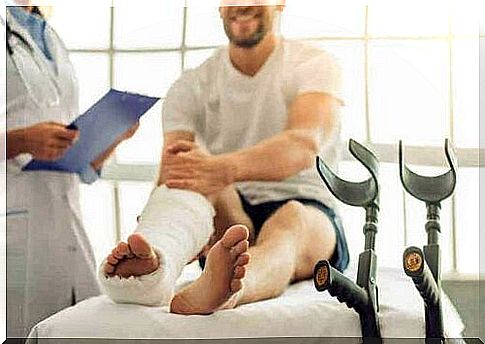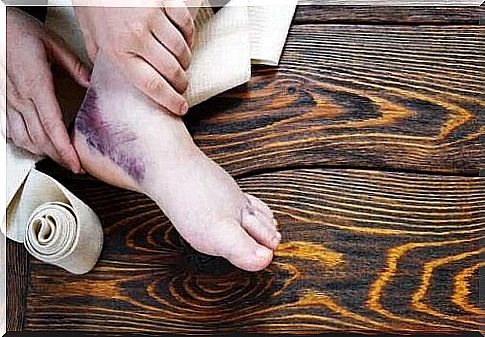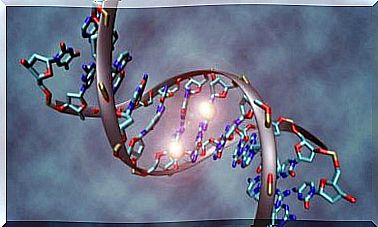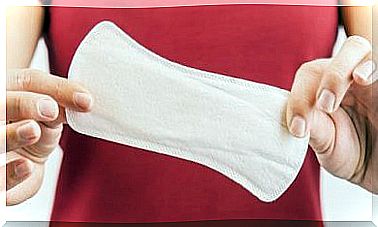A Fracture Or A Sprain: What’s The Difference?

In traumatology, two injuries are among the most common: a fracture or a sprain. We all know someone who has been through one of these two circumstances, or perhaps we have even experienced them ourselves.
Because they are so common injuries, it is logical that they are prone to confusion. When we are faced with a trauma that produces, swelling and weakness in a limb, it is a valid question to ask if we are dealing with a fracture or a sprain.
The truth is that they are not the same, nor are the consequences. A fracture is more serious, although there are also really serious sprains that put the joints in danger. These can negatively affect a person’s work, athletic abilities and lifestyle.
We must first clarify that a sprain is usually a ligament injury. In this case, the ligaments are stretched more than they should, and can not return to their natural position. In extreme situations, a sprain can involve a torn ligament.
On the other hand , a fracture is a bone injury. That is, the bone tissue is broken, ruptured or deeply damaged.
Let’s take a closer look.
From a sprain to a fracture
Although the doubt about having a fracture or sprain is valid, many believe that the former is a consequence of poor treatment of the latter. That’s not the way it is. They are separate units that are not part of the same damage process.
Instead, we can say that there are degrees of severity in these injuries, and in that sense we can mark a gradation from the mildest sprain to fracture. Again, we repeat that it is not because one leads to the other, but because of their different severity.
Thus we would have:
- First degree sprain: This is the mildest. The ligaments have stretched a little and are causing pain. It may be swelling of the affected joint and fluid retention (edema). Treatment with rest and ingestion of an anti-inflammatory agent is sufficient.
- Second degree sprain : Here the ligament has stretched a little longer than the previous degree. There are also some small breaks in the fibers. Kinesiology sessions are necessary for recovery.
- Third degree sprain : This is the most severe form of sprain. The ligaments are cut, not just stretched. It requires more intensive treatment with strict rest, movements with a support bar and occasional physiotherapy exercises.
- Simple fracture : This is the fracture of the bone that remains inside the body. It may or may not be accompanied by a nearby sprain due to the same trauma that caused the fracture.
- Exposed fracture : The bone tissue is damaged, and part of it is exposed outside the body through a wound in the skin. The leg is in contact with the external environment.

Differences between the two injuries
To distinguish between a fracture and a sprain, we must consider the symptoms, how the trauma occurred, and how the affected area was left behind after the trauma. The movements that are possible when the injury occurs usually indicate the severity.
However, as soon as the injury occurs, they can be easily confused, since they share symptoms. Both cases begin with intense pain and swelling. The area is paralyzed by the same process that the injured body releases and by the accumulation of fluid due to the structures that stretch and break on the inside.
With hematoma, the situation is more complex. In general, fractures have hematoma and most sprains do not. However, bruising occurs in severe sprains, and there may also be a fracture that does not show bruising on the surface of the skin.
A key sign of fracture is marked deformity at the site of injury. The broken bone causes skin elevations that result in functional inhibition. It is very difficult to move a broken leg.

First aid in the event of a fracture or sprain
Once the injury has been determined as a sprain, the steps to follow to provide first aid on the spot will be:
- Immobilization : The sprained joint should be kept still.
- Local cold : Applying cold to the joint reduces inflammation and thus reduces pain.
- Bandage : Tight or compressive bandage is very useful for sprains. In addition to favoring immobilization, the bandage controls inflammation.
- Raising the extremity : Since we do not want more fluid to accumulate in the injured joint, we must raise it so that it drains excess edema.
On the other hand, if the injury is identified as a fracture, first aid will be:
- Touch as little as possible : It is not the same as a sprain, and you can not manipulate a broken bone carelessly. Rather, insulate the area from the damage and avoid contact.
- Promoting circulation : If the injured person suffered a fracture in the extremities and has an object that could interfere with blood flow, try to remove it. For example, if the person has a broken wrist and uses a watch, then they should try to remove the watch and touch the affected area as little as possible.
- Check for bleeding : If there is bleeding next to the fracture, the doctor must compress the point where the blood comes out. Large and exposed fractures are capable of causing sudden blood loss that can damage the rehabilitation of a limb.
As you can see, there are many differences between fractures and sprains, although they may have similar initial symptoms. It is important to get an accurate diagnosis from a doctor, as the treatment depends on it.









